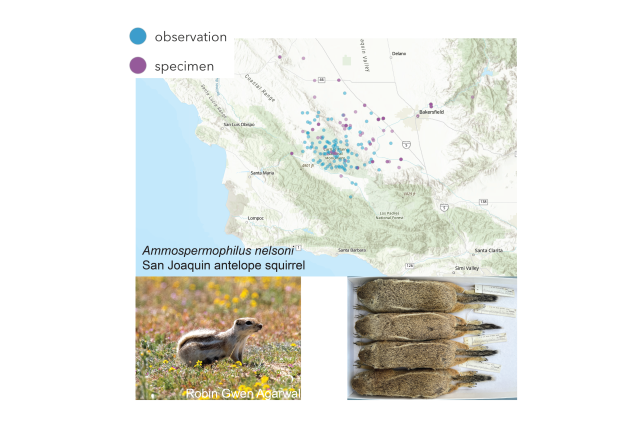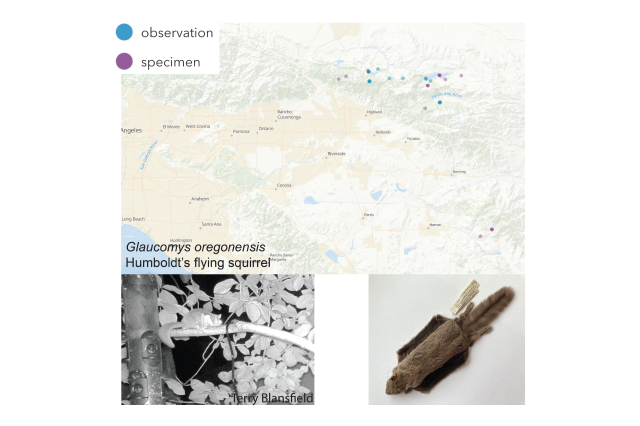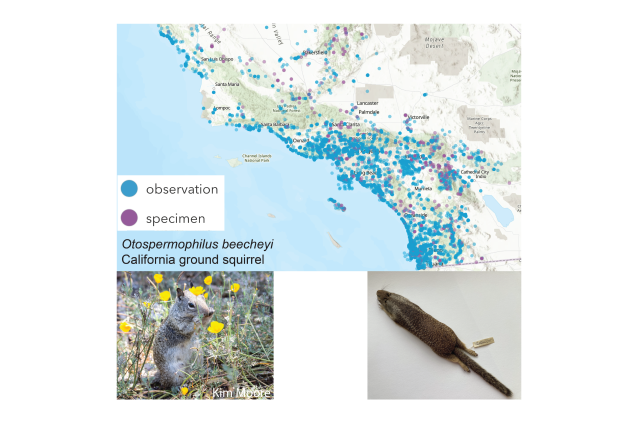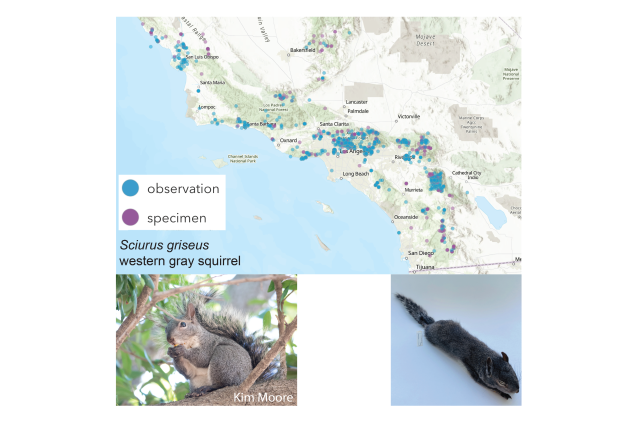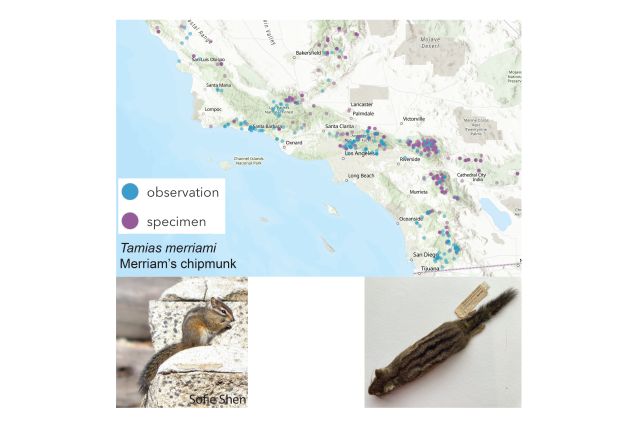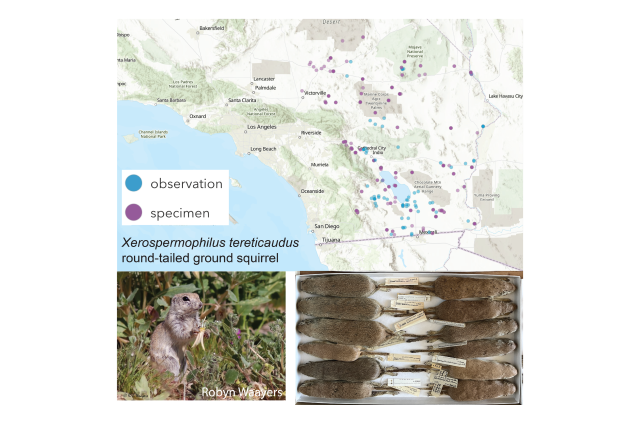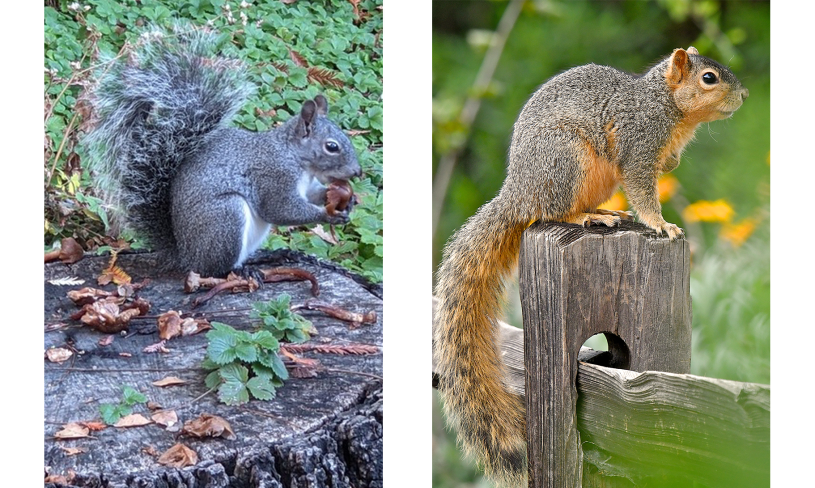Southern California Squirrel Survey
What is the Southern California Squirrel Survey?
The Southern California Squirrel Survey is a community science research program to catalog the occurrence of squirrels in the greater Southern California region.
Although squirrels are well-known to people, they are often overlooked. Not many people realize that eastern fox squirrels are not native to California. Similarly, the decline of the native western gray squirrel in urban areas has gone unnoticed. The aim of the Southern California Squirrel Survey is to learn more about the distribution and behavior of these species, as well as the many other understudied species in our regions, such as Humboldt’s flying squirrel (Glaucomys oregonensis), eastern gray squirrel (Sciurus carolinensis), lodgepole chipmunk (Tamias speciosus), and Merriam’s chipmunk (Tamias merriami).
We’re also interested in observations of other squirrel species in Southern California. Humboldt’s flying squirrel is a small brown-gray nocturnal species found in the conifer forests of the San Bernardino Mountains. The lodgepole chipmunk and Merriam’s chipmunk (yes, chipmunks are squirrels) can be difficult to tell apart, but both can be found in parts of Southern California. There are also several ground squirrel species that occur in Southern California: the California ground squirrel, the antelope ground squirrel, the round-tailed ground squirrel, and the Mohave ground squirrel.
We welcome photo submissions of all the above species, but we hope you’ll tell us more about your observations. Was the squirrel vocalizing, eating, or interacting with another animal? In what kind of habitat was it seen? The more detailed the observation, the better.
Explore Hahamongna Watershed Park with NHM's Eastern Fox Squirrel Puppet Acorn Jones
Mapping Squirrels and Chipmunks of Southern California
NHM researchers Kayce Bell, Miguel Ordeñana, and Lisa Gonzalez compared the Museum’s collection of Sciuridae specimens (the squirrel family of mammals that includes chipmunks, prairie dogs, marmots and more) with observations made on iNaturalist. Comparing Squirrel Survey observations to the tangible records of biodiversity in the collection will help researchers understand what types of habitat or combinations of landscape characteristics sustain the 15 species of squirrels residing in Southern California.
Explore some of their findings below or read the whole poster here.
Did you know that the eastern fox squirrels commonly observed in Southern California are not native to the area?
As their common name implies, these tree squirrels were introduced from the eastern United States about 100 years ago. We’re interested in tracking the expansion of this introduced species, but we also hope to gain valuable insight into what is happening when the introduced eastern fox squirrel comes into contact with the native western gray squirrel. Both are large bushy-tailed tree squirrels but you can tell them apart by their color: eastern gray squirrels have reddish-brown fur and are commonly seen in urban and suburban neighborhoods; western gray squirrels have silver-gray fur and live in the forested areas of our mountains and foothills.
How to Participate
- Look For Squirrels!
Go out and find squirrels in your schoolyard, neighborhood (or anywhere in Southern California!) year round. There are more than just the top three listed here, including a species of flying squirrel you might spot only at night! - Take Pictures
Photograph the squirrel and document when and where you found it (GPS or cross streets), what kind of habitat it was in, and what it was doing. The more detailed the observation, the better! - Submit Your Observations
Submit photos and supporting data (date, time, address/locality, and observational notes) by e-mail; upload to the project page; or use the iNaturalist app (Android and iOS).
News
To view the most recent Southern California Squirrel Survey data, visit our project page on iNaturalist.
On the project page you will be able to view a map of observations that have been submitted, see who has contributed, how many contributions each person has made, and how many of the potential species in this area have been documented through the survey.
Resources
- Animal Diversity Website
- National Geographic Website
- Squirrels: The Animal Answer Guide, Richard W. Thorington, Jr. and Katie E. Ferrell, Johns Hopkins University Press, 2006, 183 pp.
- Squirrels of the World, Richard W. Thorington, Jr., John L. Koprowski, Michael A. Steele, and James F. Whatton, Johns Hopkins University Press, 2012, 472 pp.
- North American Tree Squirrels, Michael A. Steele and John L. Koprowski, Smithsonian Books, 2003, 224 pp.
Staff
For general inquiries, e-mail squirrelsurvey@nhm.org or call 213.763.3320.
